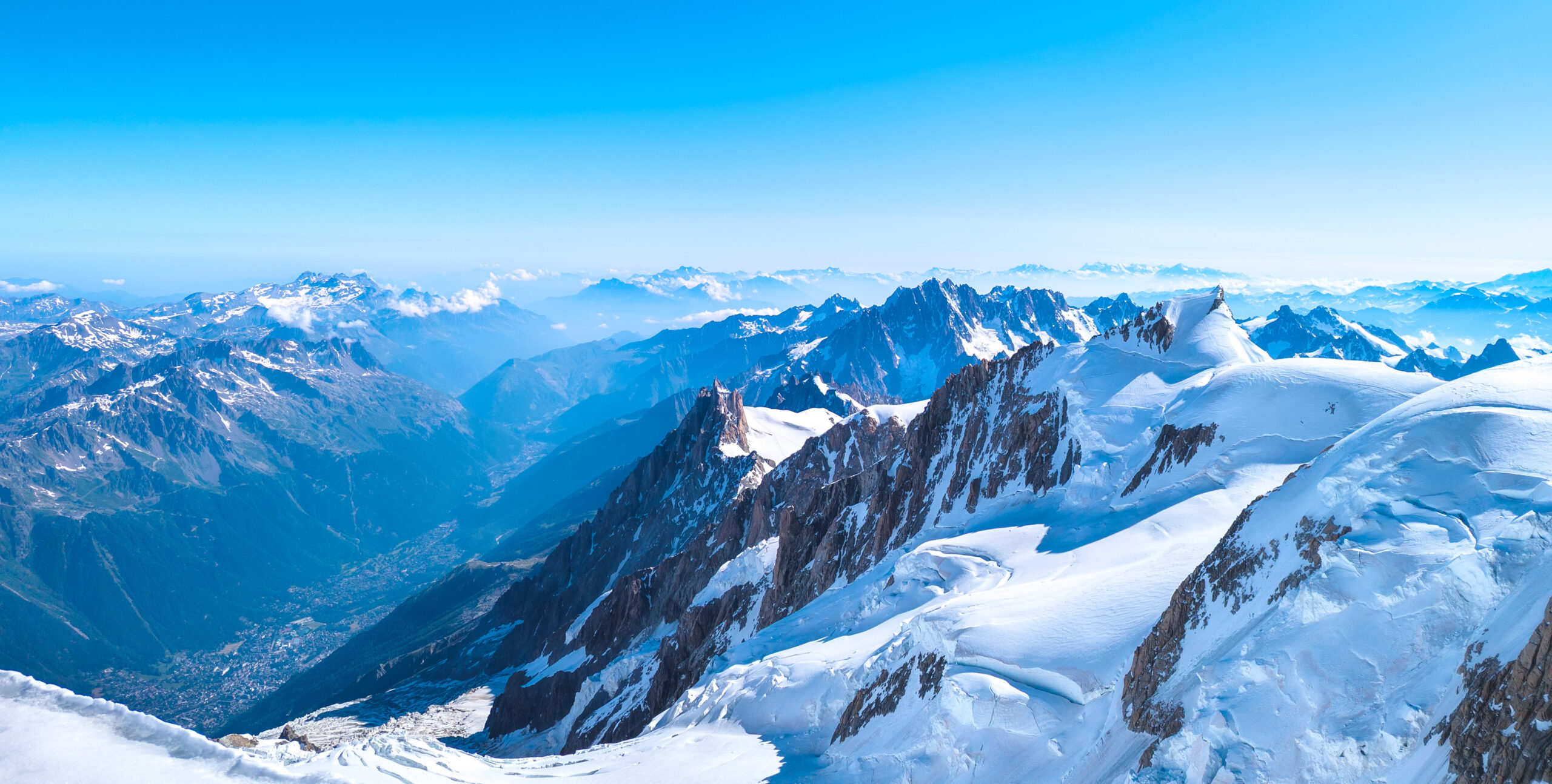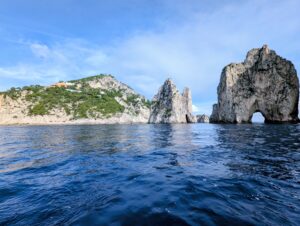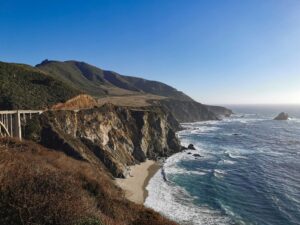Overview: This post chronicles a long-anticipated attempt to climb Mont Blanc, the highest peak in the Alps, undertaken with my brother in June 2025. It details the meticulous planning involved, including navigating the challenging hut reservation system, the journey to Chamonix, and the ascent via the normal Goûter route. The narrative covers the approach to the Tête Rousse and Goûter refuges, the inherent dangers of the Grand Couloir, and the profound personal experience of battling acute altitude sickness. This account aims to provide a realistic perspective on climbing Mont Blanc, blending personal experience with practical information for aspiring alpinists, and reflecting on the allure and perils of high-altitude mountaineering.
Prologue: The Long Road to the White Mountain
The ambition to climb Mont Blanc had been a shared dream for my brother and me for several years. Our foundational training came two years prior, during a comprehensive glacier course in Sulden (Solda), Italy. There, we learned essential alpine skills, including crevasse rescue techniques, self-arrest, rope work, and navigation on glaciated terrain – all prerequisites for tackling a peak like Mont Blanc.
Our initial attempt to climb that same year was thwarted by poor conditions on the mountain, particularly significant rockfall danger in the infamous Grand Couloir. The following year, our plans were again frustrated; by the time we checked, the mandatory hut reservations (Tête Rousse and Goûter refuges) were fully booked for the entire season. This highlighted a critical aspect of climbing Mont Blanc via the popular Gouter route: securing hut bookings is paramount and highly competitive.
Determined not to miss out again, I developed a software bot to monitor the FFCAM (Fédération Française des Clubs Alpins et de Montagne) reservation website for the unannounced opening of bookings for the 2025 season. In January, around midday, the bot triggered an alert. By the time I arrived home at 8:00 PM and saw the email, most prime dates were already gone. Nevertheless, I managed to secure two reservations: one in June, which we ultimately used, and a backup in September. For the June booking, only the Refuge de Tête Rousse was initially available. However, after a phone call and being placed on a waiting list for the higher Refuge du Goûter, we secured a spot there as well the following day. This allowed us to plan for two nights on the mountain, aiding acclimatization, though ideally, more dedicated acclimatization beforehand would have been better.
Day 1: Wednesday, June 18th, 2025 – Journey to Chamonix
- Activity: Evening drive from home to Chamonix, France.
- Accommodation: Hostel in Chamonix (private room).
- Cost: €60 for two persons for the hostel room.
Our Mont Blanc expedition truly began on the evening of Wednesday, June 18th, 2025. My brother had to work until 6:00 PM, so we departed around 6:30 PM for the approximately four-hour drive to Chamonix, the renowned alpine town nestled at the foot of Mont Blanc. We arrived a little after 10:00 PM and checked into our hostel, where we had pre-booked a private room for €60 for both of us.
Day 2: Thursday, June 19th, 2025 – The Approach: Tramway du Mont Blanc and Tête Rousse Refuge
- Activities: Final preparations in Chamonix, travel to Le Fayet, ascent via Tramway du Mont Blanc to Nid d’Aigle, hike to Refuge de Tête Rousse.
- Key Information: Tramway du Mont Blanc details, hut reservation checks.
- Overnight: Refuge de Tête Rousse (FFCAM).
- Costs: Water at refuge (€7/liter), half-board at refuge (approx. €70/person for lodging, €45/person for dinner).
The morning started with the included hostel breakfast, followed by purchasing food supplies for the next few days on the mountain. We then drove to Le Fayet (full name: Saint-Gervais-les-Bains-Le Fayet), the starting point for the Tramway du Mont Blanc (TMB). This historic cog railway would take us up to Nid d’Aigle (“Eagle’s Nest”), the effective trailhead for the Gouter route.
Deep Dive: Tramway du Mont Blanc (TMB)
- History and Engineering: The TMB is one of France’s oldest cog railways, with construction beginning in 1907. The line was progressively opened, reaching its current terminus, Nid d’Aigle (2,372 m / 7,782 ft), in 1913. It was initially envisioned to reach the Aiguille du Goûter or even the Dôme du Goûter, but engineering and financial challenges, along with World War I, halted further upward extension. It remains a remarkable feat of early 20th-century mountain engineering.
- Route and Operation: The tramway climbs steeply through forests and alpine meadows, offering spectacular views of the Mont Blanc massif and the Chamonix valley. It operates with distinctive red and white electric railcars.
- Ticketing and Access for Alpinists:
- Only three trains per day (typically 7:00 AM, 12:00 PM, and 3:00 PM from Le Fayet, though schedules can vary) ascend all the way to Nid d’Aigle. Other departures may terminate at lower stations like Bellevue.
- The Nid d’Aigle station is primarily reserved for alpinists with confirmed hut reservations. A separate ticket for this final section must be purchased at the Le Fayet station ticket office upon presentation of hut booking confirmation.
- Booking train tickets in advance often provides a discount. Tickets are generally valid for an ascent and a descent, even if the descent is on a different day.
- Return trains from Nid d’Aigle are also limited (e.g., 8:10 AM, 1:10 PM, 4:10 PM – always verify current schedules).
We caught the 12:00 PM train from Le Fayet. From Nid d’Aigle, the hike to the Refuge de Tête Rousse (3,167 m / 10,390 ft) began. During the ascent, our hut reservations were checked by officials patrolling the trail – a clear indication of the strict enforcement of the reservation-only policy aimed at managing numbers and safety on the mountain.
The hike to Tête Rousse was relatively easy and without objective dangers. We arrived at the refuge around 3:00 PM, allowing ample time to settle in, enjoy the views, and observe the notorious Grand Couloir. From the refuge’s terrace, we witnessed several hikers crossing the couloir. Minutes after they had passed, a significant rockfall cascaded down the gully – a chilling and immediate reminder of why this section claims lives each year. This visual reinforced the respect and caution demanded by the mountain.
Deep Dive: Refuge de Tête Rousse & The Grand Couloir
- Refuge de Tête Rousse: Operated by FFCAM, this refuge serves as the first common overnight stop on the Gouter route. It offers dormitory accommodation, meals, and basic amenities. As experienced, running water can be scarce or non-existent, necessitating the purchase of bottled water at high-mountain prices (e.g., €7/liter). Half-board (dinner, bed, breakfast) is typical.
- The Grand Couloir: This wide, steep gully lies directly on the ascent route between the Tête Rousse and Goûter refuges. It is infamous for its frequent and unpredictable rockfall, especially during warmer parts of the day or when freeze-thaw cycles are active. Rocks can be dislodged naturally or by climbers higher up. Crossing the couloir is arguably the most objectively dangerous part of the Gouter route. The risk is typically lowest in the early morning when temperatures are colder, and the snow/ice within the couloir is firmer.
The Refuge de Tête Rousse was quite pleasant, and the evening meal (dinner priced around €45) was surprisingly good for a high-altitude hut.
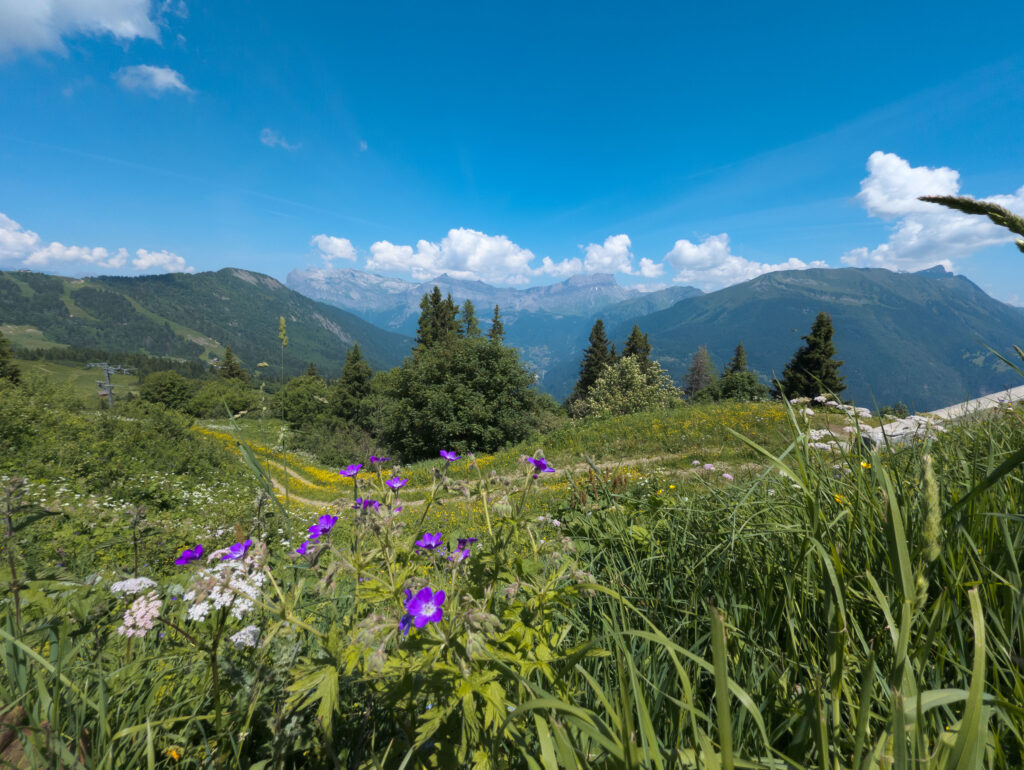
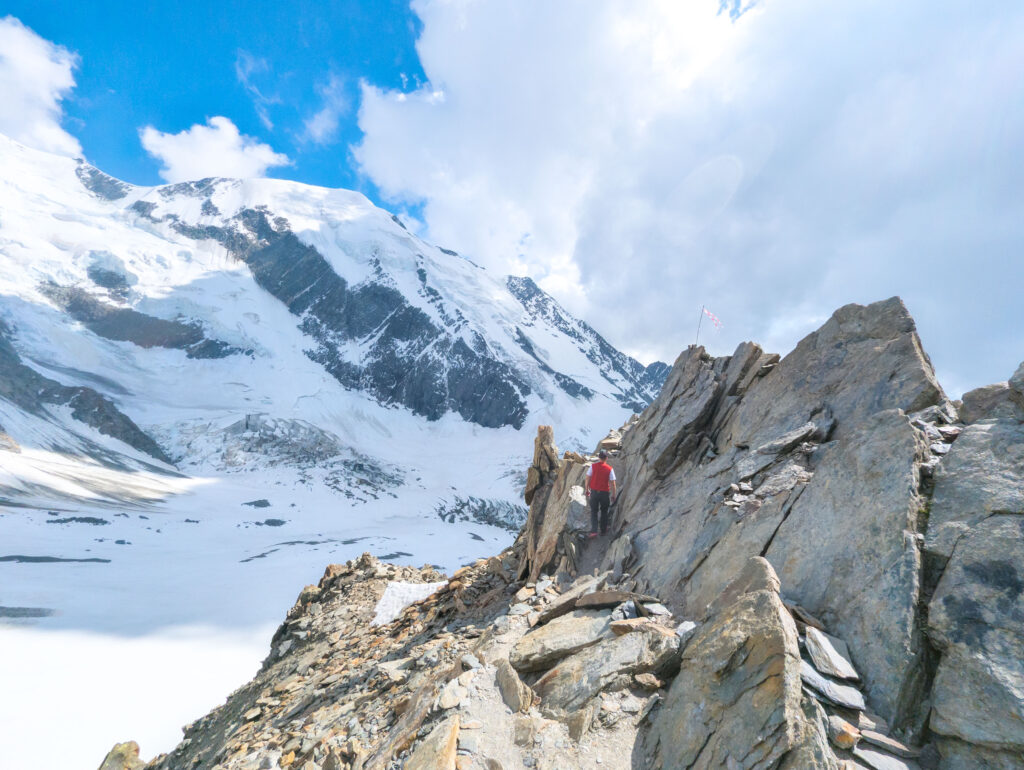
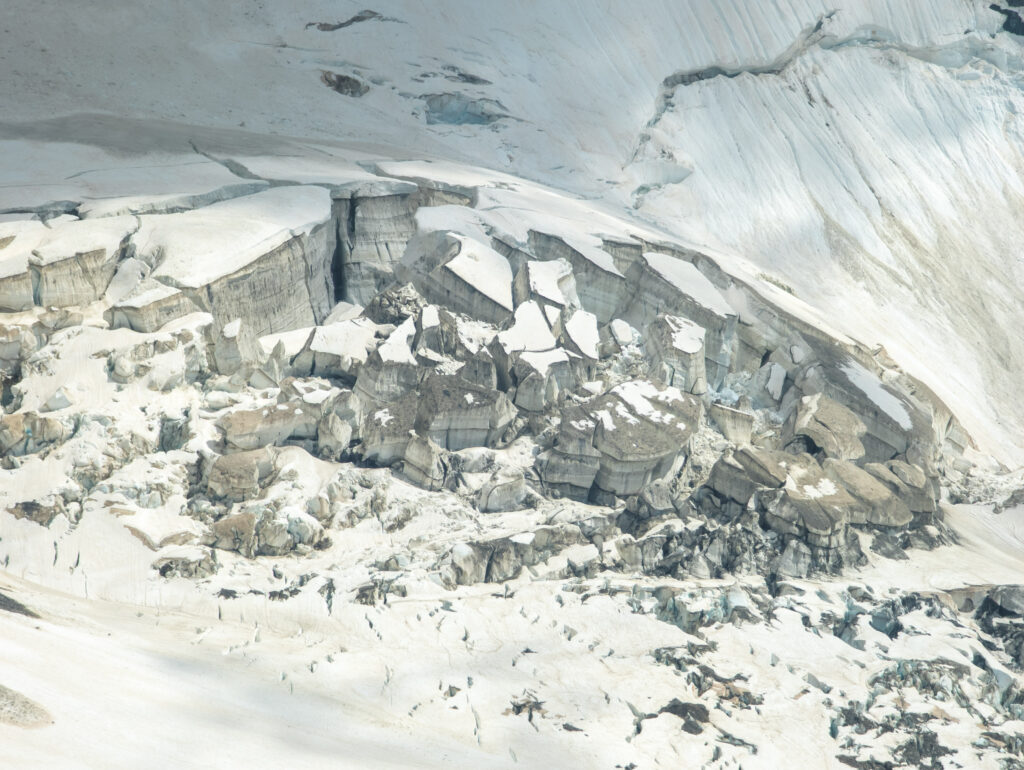

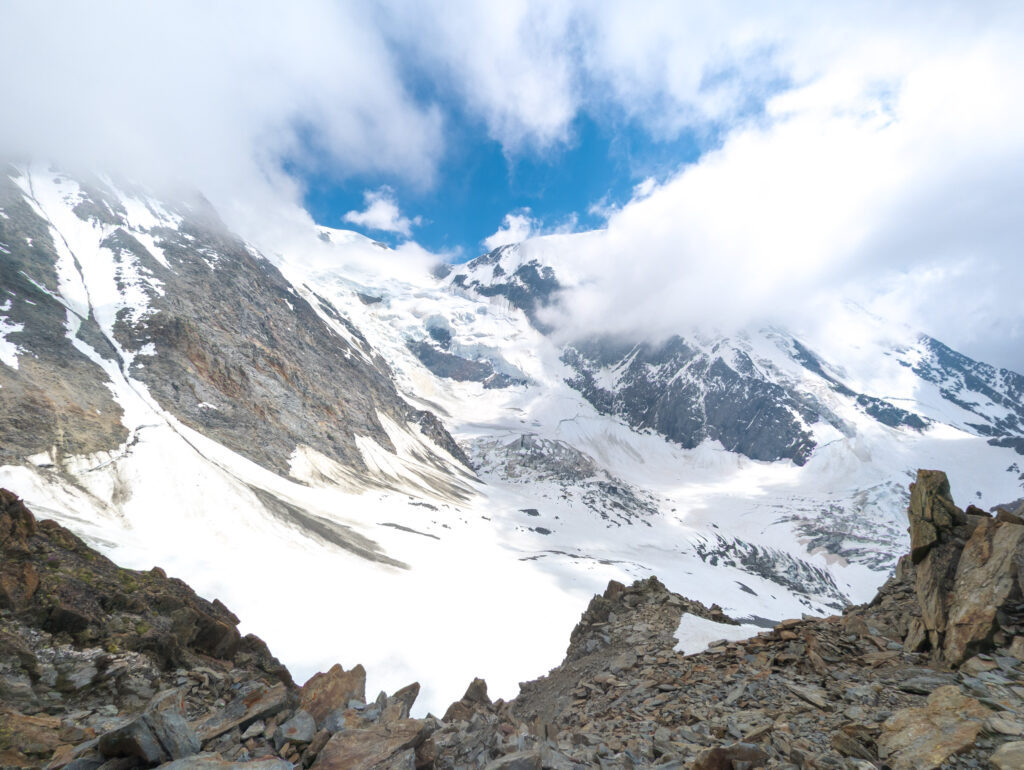
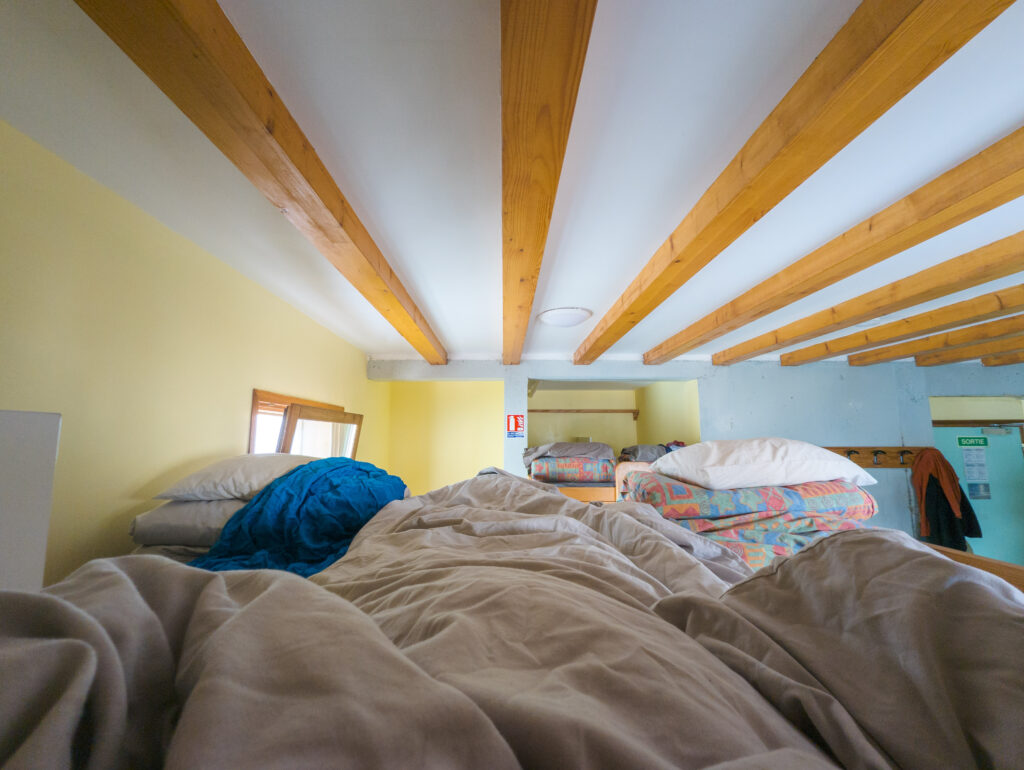
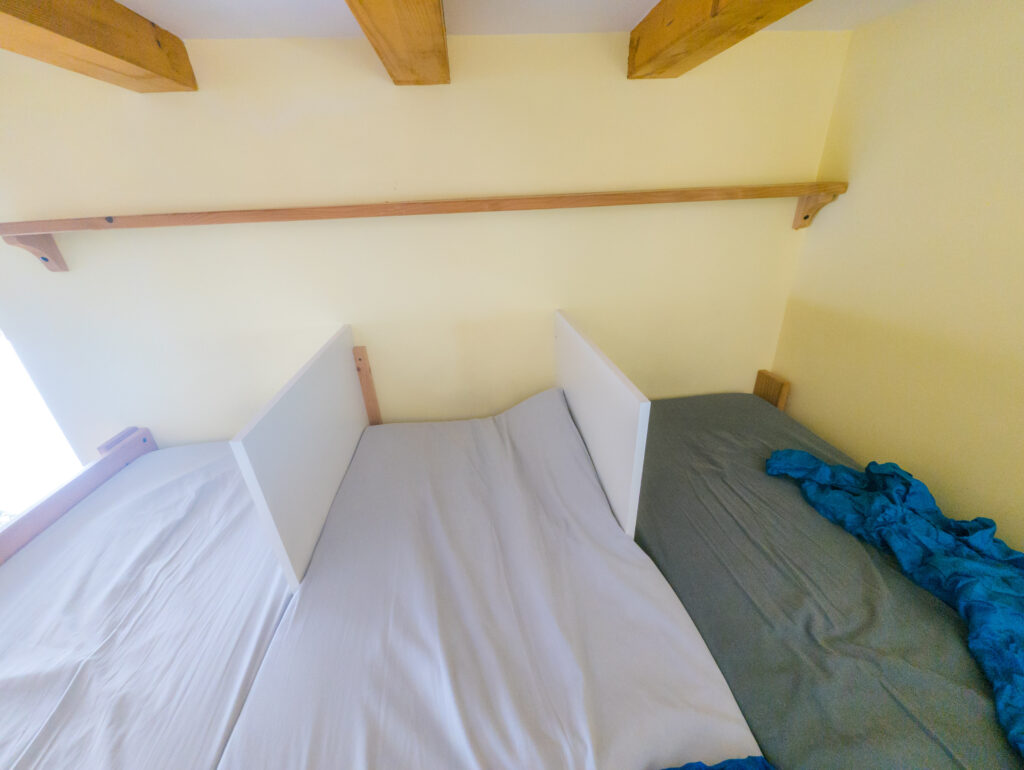
Day 3: Friday, June 20th, 2025 – The Grand Couloir, Goûter Ridge, and Altitude’s Cruel Bite
- Activities: Early morning ascent from Tête Rousse, crossing the Grand Couloir, climbing the Goûter ridge to Refuge du Goûter, continued ascent towards Dôme du Goûter, onset of acute altitude sickness, decision to turn back from Grande Bosse, brother summits, descent to Refuge du Goûter.
- Challenges: Navigating the Grand Couloir in darkness, steep rock scrambling, acute mountain sickness (AMS).
- Overnight: Refuge du Goûter (FFCAM).
- Costs: Similar to Tête Rousse for food/drink; lodging approx. €80/person.
Our initial plan was to leave Tête Rousse at 1:00 AM to minimize rockfall risk in the Grand Couloir. However, some mountain guides at the refuge advised a 4:00 AM departure, suggesting it would be safer. Skeptical that this advice was more for their convenience (to avoid parties starting before them and potentially dislodging stones), we compromised and departed at 3:00 AM.
The ascent began on an ice field, leading to the Grand Couloir, which still held a significant amount of snow. It was completely dark, our headlamps cutting cones of light into the pre-dawn blackness. In the middle of the couloir, a small stream, created by meltwater, had to be crossed. This involved a tricky transition from snow/ice, onto wet rock by the stream, and then back onto snow/ice on the far side. Having not used crampons extensively on rock, or at all in the past year, this steep and critical crossing, which needed to be done as quickly as possible, was unnerving. However, both my brother and I managed it without incident.
Beyond the couloir, the steep rock scramble up the Goûter ridge began. While not technically difficult climbing (mostly scrambling, Grade F or PD- depending on conditions), the exposure is significant, and a fall could have severe consequences. Vigilance against dislodging loose rocks onto parties below is crucial.
Around 6:00 AM, we reached the site of the Refuge du Goûter (3,835 m / 12,582 ft). We didn’t enter the hut at this point but continued directly upwards, as many climbers do, leaving any unnecessary gear for collection on the descent if staying there.
Deep Dive: Refuge du Goûter
- Location and Design: Dramatically perched on the Aiguille du Goûter, the modern Goûter refuge (opened in 2013) is an architectural marvel. This futuristic, ovoid, stainless-steel-clad structure replaced an older, more traditional hut. It’s designed to be energy-efficient and withstand extreme weather. It can accommodate around 120 people.
- Highest Guarded Hut in France: It serves as the final and highest refuge on the normal route to Mont Blanc. Due to its altitude and the technicality of the approach, it’s essential to be well-acclimatized and experienced before staying here. Bookings are mandatory and notoriously difficult to obtain.
Up to this point, I had felt relatively well. We proceeded onto the glacier, heading towards the Dôme du Goûter (4,304 m / 14,121 ft). The route was straightforward, following a well-trodden path in the snow, with crevasses still largely bridged by the winter snowpack.
However, as we gained altitude on the Dôme du Goûter, my condition rapidly deteriorated. I became overwhelmingly exhausted, with no thirst or hunger – a strange and unsettling combination. My brother insisted I drink something. After the first sip, an intense wave of nausea hit. It was clear something was seriously wrong: acute mountain sickness (AMS) had set in. My brother and I were aware that altitude sickness was a probable risk, especially as we hadn’t undertaken specific acclimatization hikes immediately before this trip, but I hadn’t expected it to hit this hard.
Deep Dive: Acute Mountain Sickness (AMS)
- Cause: AMS is caused by rapid exposure to lower amounts of oxygen at high altitude. The body needs time to acclimatize to the reduced oxygen pressure.
- Symptoms: Common symptoms include headache (most prominent), fatigue, dizziness, loss of appetite, nausea, vomiting, and difficulty sleeping. Symptoms typically develop 6-12 hours after arrival at a new, higher altitude.
- Progression: If mild AMS is ignored and ascent continues, it can progress to more severe and life-threatening conditions like High Altitude Cerebral Edema (HACE – swelling of the brain) or High Altitude Pulmonary Edema (HAPE – fluid in the lungs).
- Treatment: The primary treatment for AMS is descent to a lower altitude. Rest, hydration, and avoiding further ascent are crucial. Medications like acetazolamide (Diamox) can be used for prevention and treatment, and analgesics for headache.
- “Golden Rule”: Any illness at altitude should be considered AMS until proven otherwise. If symptoms are present, do not ascend further. If symptoms worsen, descend immediately.
The route continued down to the Col du Dôme (a saddle between the Dôme du Goûter and Mont Blanc). My condition did not improve. We reached the Refuge Vallot (4,362 m / 14,311 ft), a basic, unstaffed emergency bivouac shelter. I felt terrible, but the summit of Mont Blanc (4,808.7 m / 15,777 ft) was tantalizingly close, and the weather was perfect – clear skies and no wind.
Deep Dive: Refuge Vallot (Bivouac Joseph Vallot)
- Emergency Shelter: This is not a staffed refuge for planned overnight stays but an emergency bivouac shelter. It was originally built by scientist Joseph Vallot for high-altitude research. It provides basic shelter for climbers caught out by weather or suffering from altitude sickness. Conditions inside can be very basic and often crowded. It should only be used in emergencies.
Somehow, I decided to push on. However, upon reaching the Grande Bosse (one of the “bumps” on the final Bosses Ridge, around 4,500 m), the exhaustion was overwhelming. I made the difficult decision that it was not worth continuing to the summit in my condition.
At this point, my brother and I separated. He continued alone towards the summit, while I began the solitary descent, carrying our rope in my backpack. We were aware that while the climbing itself on this section is not highly technical (a snow plod), a slip without a rope team could still be fatal, but we made this calculated decision based on conditions and his experience.
The descent was arduous. My condition did not improve; an urgent need for the toilet compounded the misery, and the exhaustion intensified, making even downhill progress slow and requiring frequent breaks. Fortunately, I did not feel dizzy. After what felt like an eternity, I reached the Refuge du Goûter. I went straight to the toilet, then checked both my brother and myself in for our reserved spots (lodging approx. €80/person, food/drink costs similar to Tête Rousse), and anxiously awaited his return. He arrived a little over an hour after me, having successfully reached the summit. He reported that his ascent from where I turned back took about another hour and went smoothly.
We attempted to rest until dinner at 6:30 PM and then went to bed. Sleep was elusive for me; I was aware I had a fever.
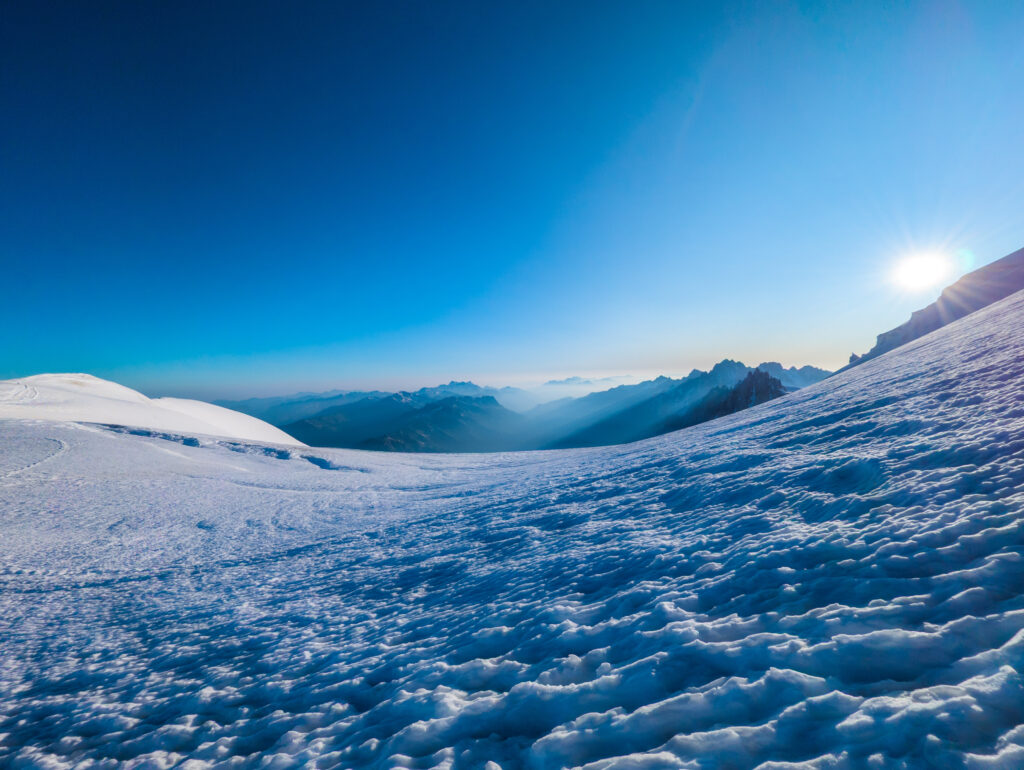


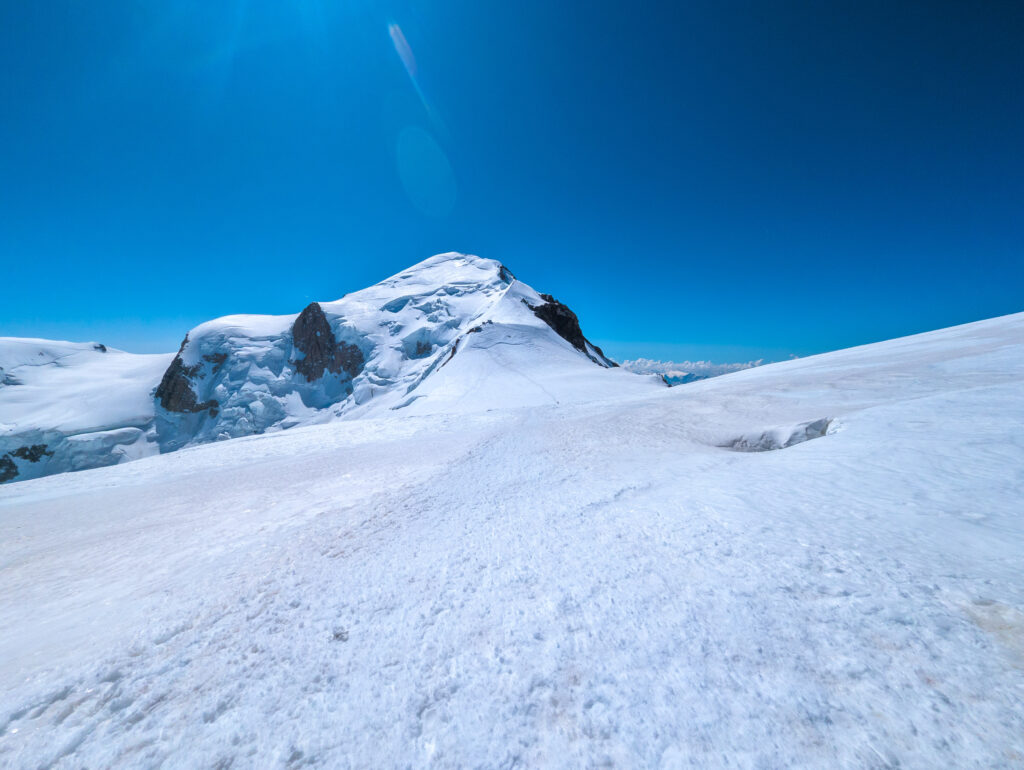
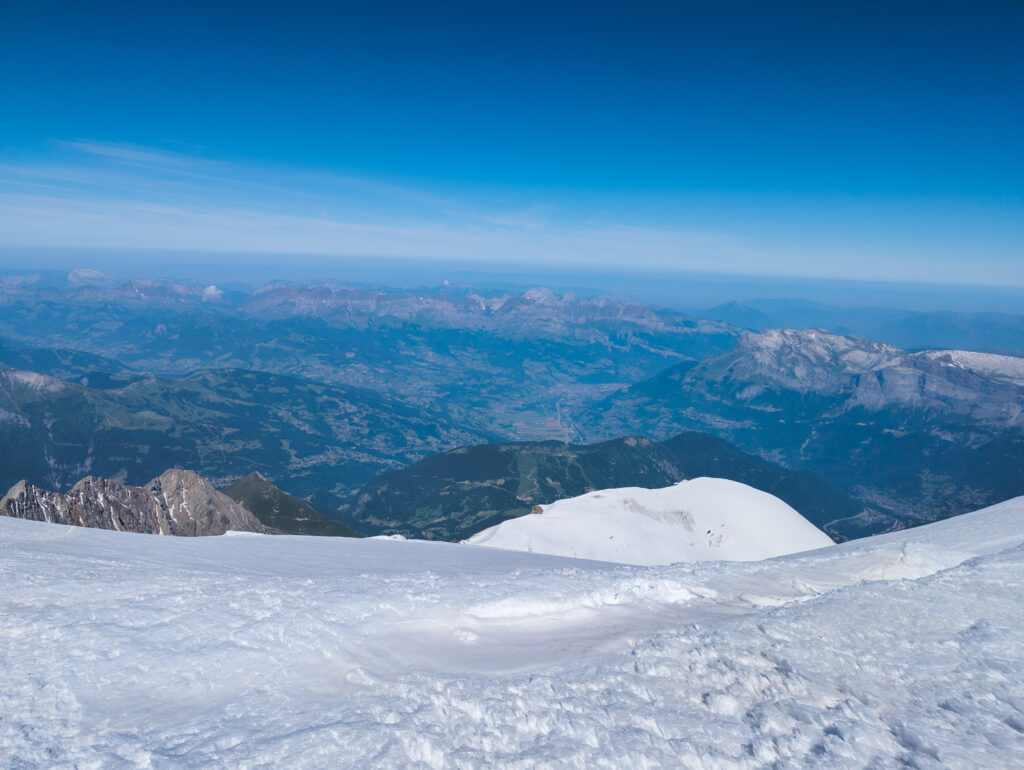
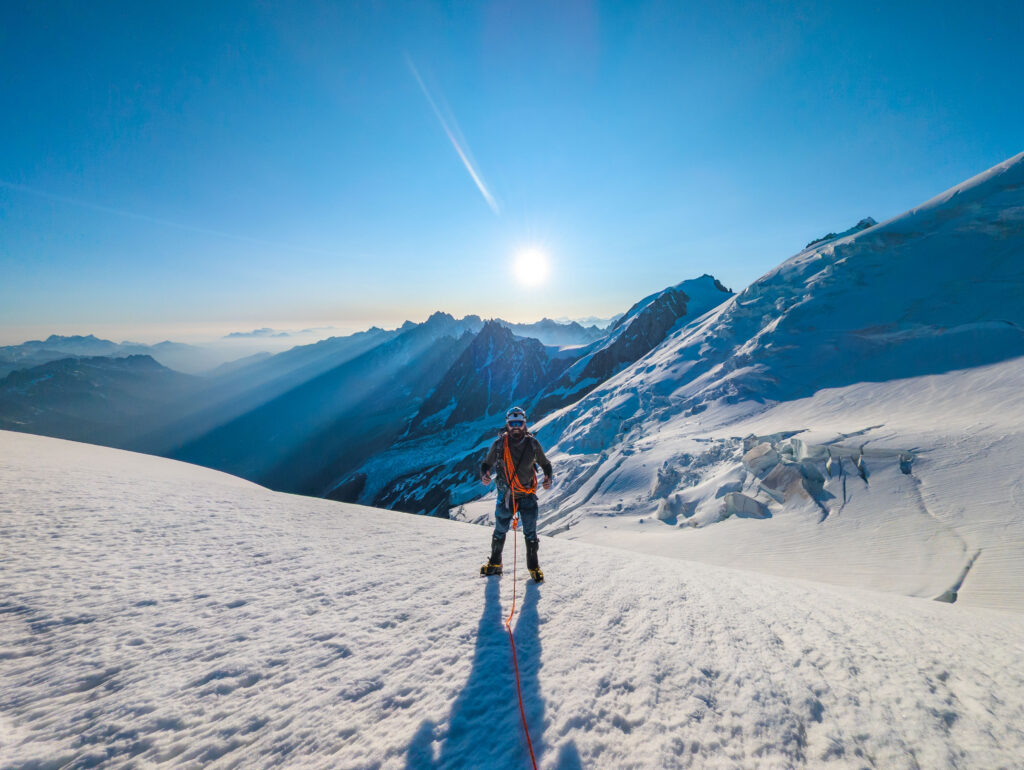
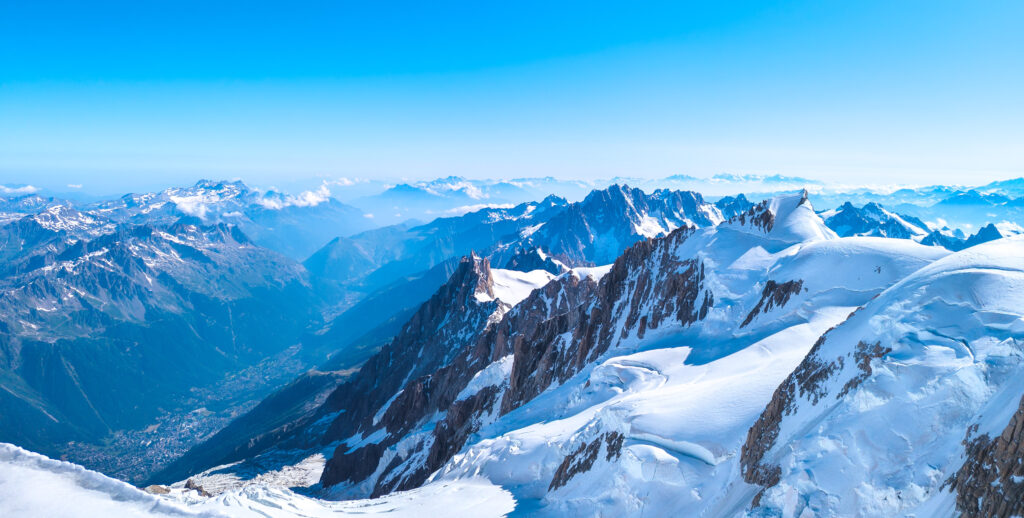

Day 4: Saturday, June 21st, 2025 – Fevered Descent and a Strange Recovery
- Activities: Descent from Refuge du Goûter with fever, crossing the Grand Couloir, descent to Nid d’Aigle, train to Le Fayet.
- Challenges: Descending with fever and extreme exhaustion, navigating new snow on the Goûter ridge.
The next morning, despite the fever, the decision was made to descend. I was completely exhausted and suffering from a severe headache, unable to even manage the rope, a task for which I was normally responsible. My brother prepared the rope, and we began our descent from the Goûter refuge.
New snow had fallen overnight, and there was concern about ice on the rocks of the Goûter ridge, especially as a thunderstorm with hail, rain, and snow had occurred the previous evening. Fortunately, the rocks were mostly dry, with just a dusting of new snow on the path. I kept my crampons on for the entire rock descent for added security, while my brother removed his.
Around sunrise, we were back at the Grand Couloir. This time, the crossing felt easier, having regained some familiarity with crampon use over the past two days. We were also fortunate with rockfall – none occurred during our crossing, though there was evidence of recent falls before and after. This reinforced our mutual sentiment: we would not attempt this particular route on Mont Blanc again. The objective danger from rockfall felt too arbitrary and uncontrollable.
By 8:00 AM, we were back at the Nid d’Aigle train station, and at 8:10 AM, the train departed for Le Fayet. Remarkably, during this train journey back down to the valley, my fever, extreme exhaustion, and headache completely vanished. Within a short period, I felt entirely normal, as if the severe illness of the preceding hours had never happened – a strange and rapid recovery upon reaching lower altitude.
Reflections on Altitude Sickness, Acclimatization & Conditions:
This experience was a profound lesson in the effects of altitude sickness. If faced with similar symptoms again, the immediate decision would be to turn around without hesitation. Pushing oneself when unwell at altitude is simply not worth the risk.
Recommendations for Future Climbers:
- Acclimatization: Proper acclimatization is crucial. I would strongly recommend undertaking several preparatory hikes to progressively higher altitudes in the days leading up to a Mont Blanc attempt, rather than approaching it without specific prior acclimatization as we did.
- Hut Strategy: For those attempting the summit from Tête Rousse, the ascent to the summit and subsequent descent all the way back down (or even just to Goûter) in one day is a significant challenge. Staying two nights at the Goûter refuge, if bookings allow, would provide a much shorter summit day and better acclimatization at a higher altitude.
Despite my personal struggles, we were incredibly lucky with the weather and conditions on the mountain. There was virtually no wind, which the guides confirmed was very uncommon. It was also very warm. My brother, for example, climbed much of the route in a t-shirt and rarely, if ever, used his gloves. In contrast, due to my fever, I felt cold and was fully layered with hat, gloves, and jacket, likely appearing oddly overdressed to other climbers.
The entire trip, including one night in Chamonix and two nights in the refuges with all food and drinks, cost approximately €400 per person. This contrasts sharply with the cost of a guided ascent; we heard that it’s common to pay over €3,000 per person for a guided trip with a 1:1 or 1:2 guide-to-client ratio.
This Mont Blanc attempt, though not entirely successful for me, was an immense learning experience, offering firsthand insight into the challenges of high-altitude mountaineering and the critical importance of listening to one’s body.
